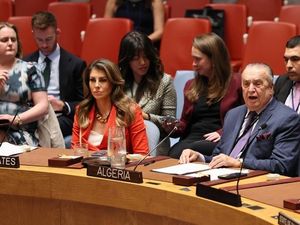On August 15, 2025, a federal courtroom in Los Angeles became the epicenter of a decades-long debate over the treatment of immigrant children in the United States. U.S. District Judge Dolly Gee issued a decisive ruling, denying the Trump administration’s latest attempt to end the Flores Settlement Agreement—a landmark policy that has protected immigrant children in federal custody for nearly thirty years. The decision, coming just a week after a hearing that pitted federal government lawyers against advocates for immigrant children, has once again brought national attention to the ongoing struggle over immigration enforcement and child welfare at America’s borders.
For those following the story, Judge Gee’s ruling may have felt like déjà vu. In her written order, she remarked, “There is nothing new under the sun regarding the facts or the law. The Court therefore could deny Defendants’ motion on that basis alone.” According to the Associated Press, this echoed her response to a similar effort by the Trump administration in 2019, when officials previously sought to terminate the agreement. The government, she wrote, failed to “identify any new facts or law” since that earlier attempt. Instead, the court was asked to revisit old ground—only this time, with even more at stake as immigration enforcement and detention policies have become increasingly controversial in the national discourse.
The Flores Settlement Agreement, established in 1997, was the result of more than a decade of litigation sparked by the case of a 15-year-old Salvadoran girl detained by federal authorities in Los Angeles during the 1980s. The agreement set minimum standards for the treatment of immigrant children in federal custody, mandating that licensed shelters provide basic necessities such as food, water, adult supervision, emergency medical care, toilets, sinks, temperature control, and proper ventilation. It also placed a strict 72-hour limit on how long U.S. Customs and Border Protection (CBP) could hold child immigrants before transferring them to the U.S. Department of Health and Human Services (HHS).
Yet, as evidenced in recent court filings, the reality on the ground has often diverged from these standards. In May 2025 alone, CBP held 46 children for more than a week, with six of those children detained for over two weeks and four for a staggering 19 days. Earlier in the spring, 213 children were reported to have been held for more than the 72-hour limit, including 14—toddlers among them—who spent over 20 days in custody. According to LAist, Diane de Gramont, an attorney with the National Center for Youth Law, described the conditions as “prison-like,” noting, “Nobody’s supposed to be held in Border Patrol facilities for more than 72 hours. But kids had been held for over a week, even two weeks, three weeks. And there have been children held for over a month in a holding cell with no access to daylight or recreation, and infrequent access to even showers.”
Advocates for immigrant children have argued that these extended detentions are not only illegal under the Flores Agreement, but also inhumane. During last week’s hearing, they pressed Judge Gee to appoint an independent monitor to oversee conditions in CBP facilities—a request on which the judge has yet to rule. Currently, third-party inspections are permitted only in certain regions, like El Paso and the Rio Grande Valley, but plaintiffs have submitted evidence suggesting that violations are widespread and systemic.
The government, for its part, has maintained that the Flores Agreement impedes its ability to manage the border effectively and to expand detention capacity for families. Tiberius Davis, a Justice Department attorney, told the court that recent legislation—dubbed the “Big Beautiful Bill”—allocated billions for new immigration facilities, including those intended for family detention. “But currently under the Flores Settlement Agreement, that’s essentially void,” Davis argued, suggesting that the agreement’s restrictions undermine the government’s authority to detain families together, sometimes for extended periods.
Judge Gee acknowledged that the government has made some improvements in the conditions of confinement for children, but she was quick to point out that these improvements are “direct evidence that the FSA is serving its intended purpose.” She dismissed the idea that the agreement should be abandoned simply because some progress has been made as “nonsensical.” According to AP and LAist, the judge found that Homeland Security regulations still do not satisfy the agreement’s requirements, particularly regarding the quick release of minors and the proper licensing of family detention centers.
Not all recent developments have been setbacks for the government. Last year, at the urging of the Biden administration, Judge Gee partially ended the Flores Agreement as it relates to children in HHS custody. Special court supervision is no longer required once HHS takes custody, except in certain facilities for children with more acute needs. However, the heart of Flores—its protections for children in Department of Homeland Security (DHS) facilities, including those run by Border Patrol—remains firmly in place.
The origins of the Flores Agreement serve as a potent reminder of the stakes involved. Carlos Holguín, the immigration attorney who first brought the lawsuit in the 1980s, is still fighting for the rights of immigrant children today. As Sergio Perez, executive director of the Center for Human Rights and Constitutional Law, told LAist, “It’s an absurd and political move that reflects this administration’s seemingly insatiable disdain for the checks and balances.” For advocates, the persistence of the agreement is a necessary check on government power, ensuring that children are not lost in the machinery of immigration enforcement.
Meanwhile, the federal government continues to seek ways to expand its detention infrastructure. New centers, like one in Florida infamously dubbed “Alligator Alcatraz,” have drawn lawsuits alleging that detainees’ constitutional rights are being violated. The debate over whether to expand independent monitoring of such facilities remains unresolved, with Judge Gee still considering motions from advocacy organizations.
As the legal battles continue, the facts on the ground speak volumes. Despite billions in new funding and repeated efforts to loosen restrictions, the government has struggled to comply with the basic standards set out in the Flores Agreement. Children remain at risk of prolonged detention in conditions that advocates describe as harsh and unsuitable for minors. The court’s latest ruling underscores the enduring relevance of Flores and the ongoing need for vigilance in protecting the rights of the most vulnerable at the border.
For now, the Flores Settlement Agreement stands—its legacy reaffirmed, its future still the subject of fierce debate. Judge Gee’s decision may not have ended the controversy, but it has ensured that, at least for the time being, the protections for immigrant children remain firmly in place.






